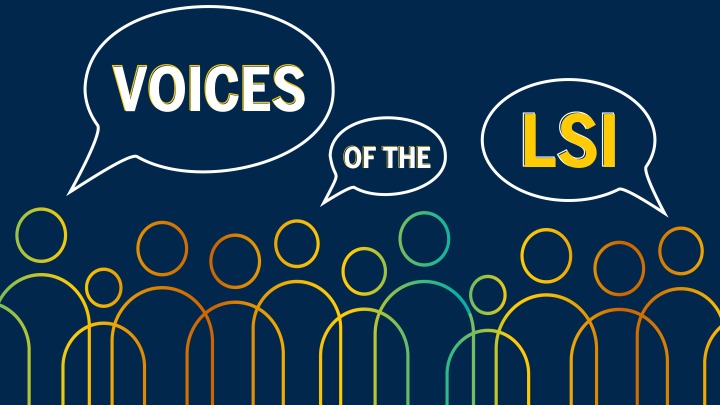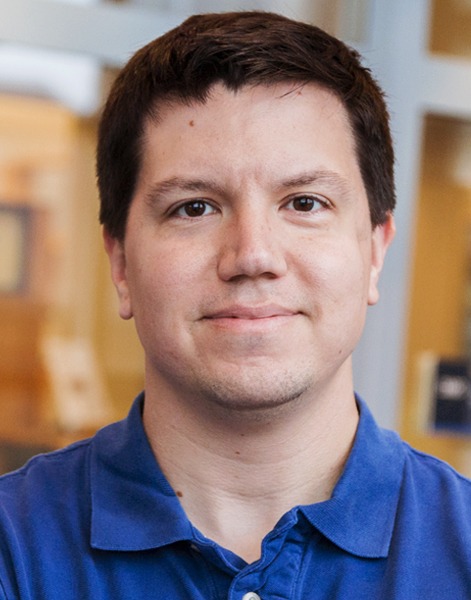
Voices of the LSI: Opening paths to scientific research

When I was in high school, I did not know any scientists. I didn’t know what scientific research was, and I certainly didn’t know how one becomes a scientist. My concept of scientific research came from what I’d seen in movies. My family and friends could see that I had a strong love of learning, and one of my favorite hobbies was reading non-fiction; but I never thought of learning as being related to any job I could pursue. And perhaps as a consequence, I didn’t think about my future career options very seriously.
I ended up applying to a single university just to keep up with some of my friends. I did not even know about non-athletic college scholarships, let alone how to apply for any. It was clear to me and my parents that I would need to work to cover the costs of college. I applied for multiple campus jobs before my first day of classes, including one position in a research laboratory washing lab dishes and supporting graduate students with their work. I had no idea what a graduate student was at the time, but I knew I could wash dishes. To my great fortune, the position introduced me to the science that I would study while pursuing my own Ph.D. and beyond.
Part of this lab’s work included examining human brains postmortem for the pathological hallmarks of Alzheimer’s disease to confirm clinical diagnosis. When the dishes were all washed, I learned to run the immunohistochemical assays so I could help the lab director confirm the Alzheimer’s diagnoses. Even as a college freshman, I was encouraged to participate in the constant lab discussions on how communication between cellular subnetworks of the brain encoded information and produced perception, behavior and consciousness. The time I spent engaged with these inclusive scientists 20 years ago led to my sustained passion for discovering how neural networks process information.
That experience opened the door to scientific research for me. I learned about graduate programs and how to continue pursuing research. I applied and was admitted to the University of Michigan for graduate school, where I probed the processes that modify connections between neurons important for learning and memory in rodents. I continued my neuroscience research as a postdoctoral researcher at U-M Life Sciences Institute, studying sensory transduction and how neural circuits process sensory information.
I was passionate about my research, but I also developed an equally strong love of mentoring students at the bench and teaching science. I had mentored over a dozen undergraduate students in my career at this point, and I felt like all of these students, and myself, were fortunate to be able to pursue scientific careers. Each of us could look back and identify the people and opportunities that helped us find our way to the bench. I also knew that students who lack access to these resources and opportunities have a much harder time finding their path into science. My wife is also a scientist from a small rural town, and we talked about this disparity often over the years. I wanted to educate students about their options as scientists, how to navigate the college application process, and where to find and apply for scholarships. When I learned the LSI was preparing to launch a high school outreach program that would connect more students to research, I knew I wanted to be involved.
I try to give these high school students the guidance on all the topics I wish I had known more about when I was in their place. ... I’ve seen the difference it can make in the trajectory of students’ education and careers.
In 2018, I was hired to help bring the first cohort of high school students to the LSI to conduct mentored research. Since that first summer, the LSI has run its own Aspirnaut program at the University of Michigan every year, providing six weeks of hands-on laboratory experience for rising seniors from under-resourced communities across the state of Michigan.
There’s no question in our minds that talented students exist everywhere. While recruiting participants for Aspirnaut I visited schools across Michigan and found promising students who are curious about research and the life sciences everywhere I went, from small schools in rural towns that reminded me of my own hometown to large urban schools in cities like Flint.
A main goal of the Aspirnaut program is to provide state-of-the-art research experiences to top science students from under-resourced areas, including rural or socioeconomically disadvantaged communities. So far, our Aspirnauts have come from 11 different counties across Michigan, including students from Flint, Detroit, the Upper Peninsula and small towns dotting the rural landscape. One highlight of this position is that I get to meet so many inspirational students—even more than our program can currently accommodate. We are working to expand the Aspirnaut program on campus so more students can benefit from the resources across the breadth of university. There are a great number of mentors on campus eager to help students pursue their calling.
While lab research is central to the program, we also need to help students navigate college admissions and financial aid processes. This includes pushing students to find and apply for scholarships. Essay writing is a critical skill for college entrance and scholarship applications, so I ask the Sweetland Writing Center on campus to run a workshop for our Aspirnauts each summer. I try to give these high school students the guidance on all the topics I wish I had known more about when I was in their place. These college preparation activities are not as exciting as getting to perform actual research, but I’ve seen the difference it can make in the trajectory of students’ education and careers.
I’ve been able to experience wonderful discoveries and meet brilliant people because I stumbled upon lab research. Thanks to that first chance encounter with research and the encouragement of supportive scientists, I have been able to earn a Ph.D. in neuroscience from the University of Michigan and work on the science that interests me the most. I am proud to be part of an institution that dedicates significant resources to making sure the doors to science are accessible for so many other young people.
About the Author
Adam Iliff, Ph.D., is the manager of trainee development at the Life Sciences Institute. In addition to his role with the Aspirnaut program, he enjoys teaching graduate students as a Lecturer for the Program in Chemical Biology. He also oversees the Cancer Chemical Biology program as the Master's Graduate Chair of the Rackham Program in Chemical Biology.


